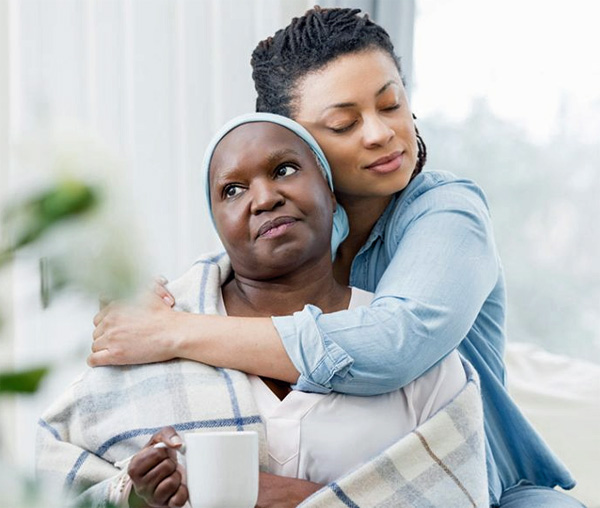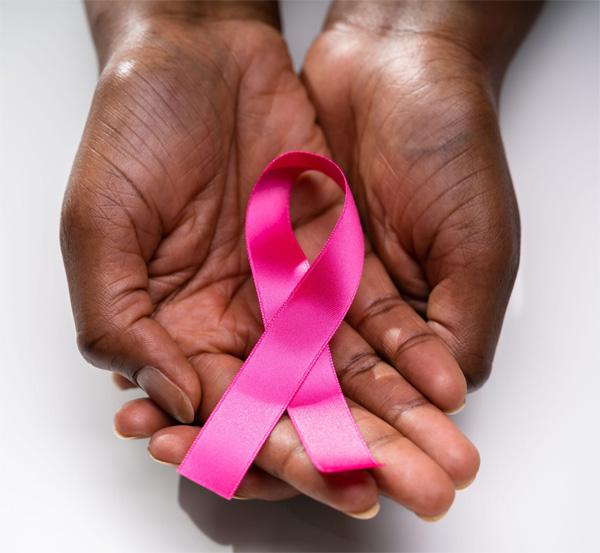Breast cancer is one of the most pressing health challenges faced by women across the United States, but the burden is not shared equally. African American women face higher rates of death from breast cancer, are more likely to be diagnosed with aggressive forms of the disease, and experience significant disparities in access to care. The fight against breast cancer must be a priority, not just during African American History Month, but throughout the year, as understanding and addressing these disparities can save lives.
The Disproportionate Burden of Breast Cancer
Despite comparable breast cancer incidence rates between African American and white women, African American women have a 42% higher mortality rate. This gap is particularly alarming given advances in breast cancer treatment and early detection strategies that have significantly improved survival rates for other groups. What makes breast cancer deadlier for African American women?
The answer lies in multiple factors: the biology of the cancer itself, genetics that make it more likely, social and economic barriers, differences in treatment, and cultural mistrust of the healthcare system. One of the most aggressive subtypes of breast cancer, called triple-negative breast cancer (TNBC), is twice as likely to occur in African American women than in white women. Unlike other forms of breast cancer, TNBC lacks three important genes that keep breast cancer less aggressive. These genes or receptors are called the estrogen, progesterone, and HER2 receptors and if the cancer has these, it makes targeted hormonal therapies effective. Because these are not present in many cancers among African American women, it makes treatment more challenging, often requiring chemotherapy as the primary course of action, which comes with severe side effects and higher recurrence rates.
Understanding the Role of Genetics and Biology
Research has identified genetic factors that may contribute to the increased risk of TNBC among African American women. Studies suggest that inherited mutations in two genes, called the BRCA1 and BRCA2 genes, increase the risk of breast and ovarian cancer. These genes are more prevalent in women of African descent. Additionally, women with West African ancestry appear to have a higher likelihood of developing TNBC.
Beyond genetics, the neighborhood of the tumor, called its microenvironment, plays a crucial role in cancer progression. African American women are more likely to develop tumors that are biologically more aggressive, grow faster, and respond less favorably to treatment. Additionally, inflammatory processes and obesity-related factors further contribute to poor outcomes.
Links Between Obesity, Metabolism, and Breast Cancer
Obesity is a significant risk factor for breast cancer, but recent research has drawn an even stronger connection between what is called metabolic health and TNBC. Metabolic health includes understanding that excess body fat creates a pro-inflammatory environment that can promote tumor growth. Insulin resistance, a condition especially affecting African American women, has also been implicated in increasing the risk of TNBC.
A growing body of evidence suggests that lifestyle modifications—such as keeping a healthy weight, engaging in regular physical activity, and adopting a nutrient-rich diet—can significantly reduce the risk of developing breast cancer. However, structural barriers, including food deserts, limited access to healthcare, and financial constraints, often prevent African American women from making these changes.
Teen-age girls, fast food, and breast cancer
Trigger Alert: Keep adolescent girls away from fast food!
Some foods, especially fast food cooked at high temperatures, produce harmful chemicals called advanced glycation end (AGE) products. Research shows that when these chemicals are eaten during puberty, they can cause changes in breast tissue that may increase the risk of breast cancer later in life. In studies with mice, these chemicals led to abnormal cell growth in the breast, similar to what has been linked to higher breast cancer risk in humans. One key sign of this risk is increased breast density, which can make a woman up to eight times more likely to develop breast cancer.
Since puberty is a time when breast tissue is growing and changing, what a girl eats during these years could have a big impact on her future health. Cutting down on fast food and choosing healthier meals may help lower the risk. Schools could improve lunch options by offering fewer foods that have these harmful chemicals, and parents and doctors can help by spreading awareness about how diet affects breast development.
This is especially important for African American women, who have higher rates of breast cancer deaths. Making better food choices during puberty could help protect future health and lower breast cancer cases for women.
Barriers to Early Detection and Treatment
Early detection remains the most powerful weapon against breast cancer, yet many African American women face obstacles to routine screening. Cultural mistrust of the healthcare system, lack of health insurance, and a lack of awareness about recommended screening guidelines all contribute to lower mammography rates.
Studies show that a direct recommendation from a healthcare provider significantly increases the likelihood that a woman will undergo a mammogram. However, research has also found that African American women are less likely to receive these recommendations compared to their white counterparts. Mistrust in the medical system, rooted in historical injustices and present-day racial biases, further worsens these disparities.
Even when diagnosed, African American women often receive different treatment than white women. They are more likely to experience delays in treatment, receive substandard care, and face financial barriers that prevent them from completing their treatment regimen. Studies suggest that these disparities persist even when controlling for socioeconomic status and access to care.
Addressing Disparities in Breast Cancer Care
Tackling the racial disparities in breast cancer outcomes requires a multi-faceted approach that includes improved access to healthcare, culturally competent medical care, increased awareness, and more research into the unique biological and genetic factors affecting African American women.
1.) Expanding Access to Mammography and Early Detection Programs
Community-based outreach programs that offer free or low-cost mammograms have been shown to increase screening rates among African American women. Mobile screening units that serve underserved areas can play a critical role in overcoming logistical barriers to early detection.
2.) Addressing Cultural Mistrust and Improving Patient-Physician Communication
Healthcare professionals must receive training in cultural competency to address the concerns and unique needs of African American patients. Encouraging medical professionals to build trust with their patients, taking time to educate them about their risks, and involve them in shared decision-making, can improve outcomes.
3.) Increasing Awareness About TNBC and Risk Reduction Strategies
Many African American women are still unaware of the heightened risk they face with TNBC. Public health campaigns that specifically target this population can help give vital information about screening, lifestyle changes, and genetic testing options.
4.) Research and Clinical Trials
African American women are significantly underrepresented in breast cancer research and clinical trials. Ensuring that more women of color take part in these studies will lead to more effective treatments tailored to their unique genetic and biological profiles.
Survivorship and Quality of Life After Breast Cancer
For women who have already faced breast cancer, survivorship presents its own challenges. African American breast cancer survivors report higher rates of long-term side effects, including chronic pain, fatigue, and emotional distress. Post-treatment care is often inconsistent, with women lacking access to survivorship programs that could help them manage these challenges.
Support groups, psychological counseling, and holistic wellness programs—including yoga and mindfulness-based stress reduction—have been shown to improve quality of life for breast cancer survivors. These services must be made more accessible to African American women to ensure they receive the comprehensive care they need to thrive after a breast cancer diagnosis.
A Call to Action
Breast cancer is still a formidable foe, but knowledge, awareness, and advocacy can save lives. African American women must be empowered with the tools and information they need to protect themselves. Policymakers, healthcare professionals, researchers, and community leaders must work together to dismantle the barriers that contribute to the alarming disparities in breast cancer outcomes.
Education and proactive healthcare decisions can change the trajectory of this crisis. By acting now—through increased screenings, advocacy, lifestyle modifications, and research participation—we can work toward a future where breast cancer is no longer a disproportionate threat to African American women.
The battle against breast cancer is ongoing, but with the right knowledge, advocacy, and support, we can change the future for African American women. This is not just about awareness—it is about action and ensuring that every woman has the opportunity to lead a long and healthy life.
And it is not just during African American History Month, but all year long.
About the author Steven C. Quay, MD, PhD
Dr. Steven Quay has made over 410 published contributions to medicine and has been cited over 12,300 times, placing him in the top 1% of scientists worldwide. He holds 244 US patents and patent applications. He has invented seven FDA-approved pharmaceuticals which have helped over 80 million people. He is the author of the best-selling book on surviving the pandemic, Stay Safe: A Physician’s Guide to Survive Coronavirus.
He received his M.D. and Ph.D. from The University of Michigan, was a postdoctoral fellow in the Chemistry Department at MIT with Nobel Laureate H. Gobind Khorana, a resident at the Harvard-MGH Hospital, and spent almost a decade on the faculty of Stanford University School of Medicine. A TEDx talk he delivered on breast cancer prevention has been viewed over 229,000 times. He has testified in the US Congress on matters of national security, healthcare policy, and dangerous synthetic biology research.
He is the founder and CEO of Atossa Therapeutics, (www.atossainc.com Nasdaq: ATOS), a clinical-stage biopharmaceutical company developing novel therapeutics for the prevention and treatment of breast cancer. For more information, visit www.DrQuay.com or follow him on X at @Quay_Dr.



